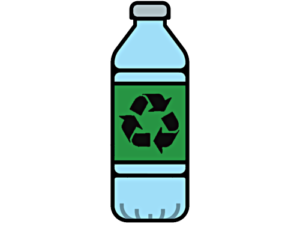Many readers are accustomed to the common phrase, “Please wear a mask” or “Make sure you wear a mask!”, because of the current pandemic that has put the world in a state of disarray. As this pandemic goes on, most have made the switch from disposable to reusable masks, however, there is still one major group that is required to use disposable masks, healthcare workers.
With many healthcare workers performing surgeries and other procedures that require sterility and cleanliness, the only way to prevent contamination is by using a new mask for every procedure. Luckily, most hospitals have waste management systems in place to prevent these masks from being littered, such as trash cans that are emptied regularly.
Still, in the UK, the amount of masks being used is so great, that masks do end up on the streets, in storm drains, and in water bodies. The reason for this is because many people who aren’t healthcare workers use disposable masks as well. Due to this, the government has published instructions on how to make reusable masks, both to preserve stock for healthcare workers and prevent masks from making their way into nature.
The masks that healthcare workers use are almost the same as reusable masks, they have elastic straps and a covering. However, unlike hospitals, many who wear these disposable masks daily have nowhere to get rid of them. This causes masks to pollute the environment. Laura Foster, from the Marine Conservation Society, says, “Just look at rivers such as the Thames and you’ll see them floating by.” As part of the Great British Beach Cleanup she is also asking volunteers who pick up plastic waste to count how many masks they collect.
RSPCA, the UK’s animal welfare organization, stated that these elastic straps are easy for birds to get trapped in, as the elastic can close around the birds. Along with this, disposable masks are not biodegradable, so they will remain in the environment for a long time.
Due to these issues, the UK government’s stance is to use reusable masks whenever possible, as to prevent plastic waste. According to a government spokesperson, they are also looking into ways of decontamination and reuse and recycling of these disposable masks.
Although this isn’t as bad of an issue in the US, I still sometimes do see masks lying on the side of the road here, about to go into storm drains. These things can’t be picked up without gloves and other safety equipment, so they become a true environmental hazard when littered.
All in all, making the switch from disposable masks to reusable masks isn’t all that difficult. Some make the excuse that it is too expensive, or too hard to find a reusable mask, but they don’t take into consideration the millions of people that make their own mask. This pandemic has caused many issues for us, but we can’t forget the environment, whatever happens.
Update 9/17/2020: Sylvester Turner, the mayor of Houston has announced the “Don’t Let Houston Go To Waste” campaign to reduce PPE litter.



